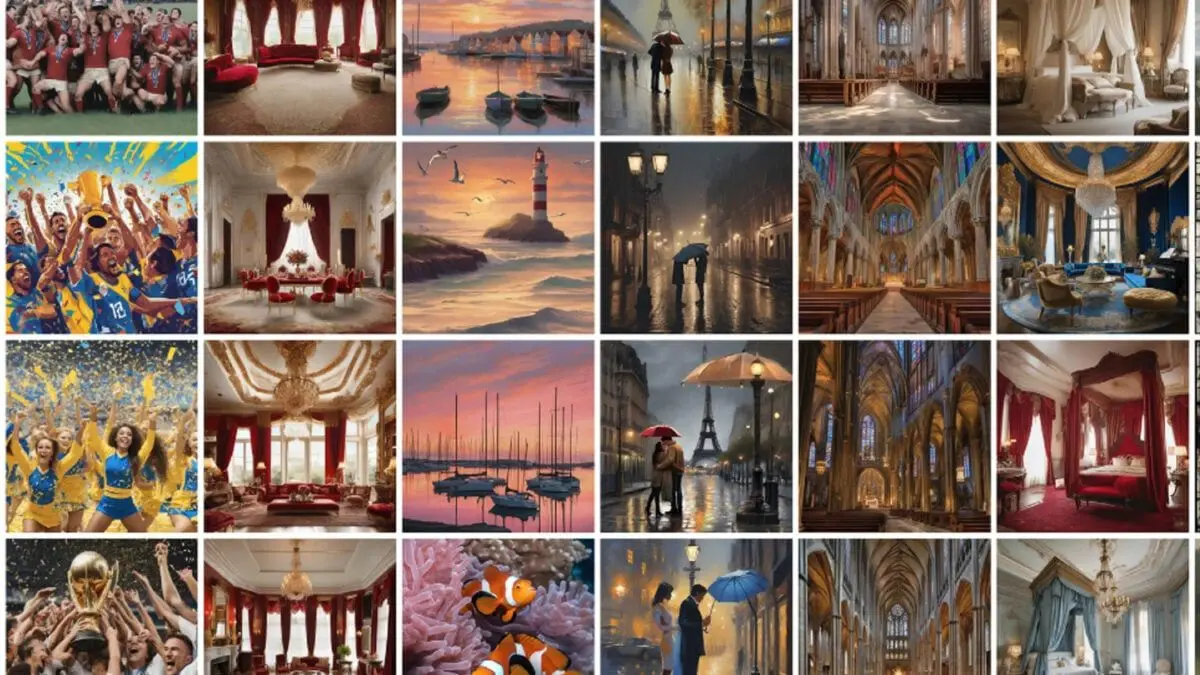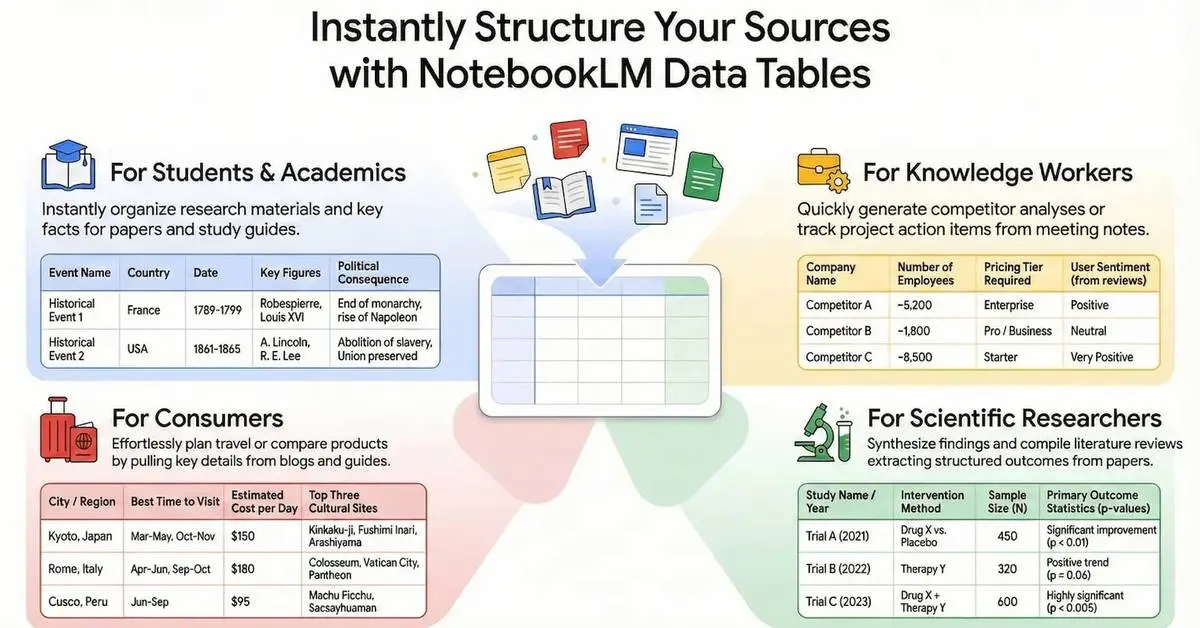The AI Dilemma in Game Development: Accusations, Experiments, and Ethical Concerns
2 Sources
2 Sources
[1]
A real issue: video game developers are being accused of using AI - even when they aren't
Generative AI is causing new and unusual problems for developers as players become more sensitive to the use of artificially generated 'slop' images In April, game developer Stamina Zero achieved what should have been a marketing slam-dunk: the launch trailer for the studio's game Little Droid was published on PlayStation's official YouTube channel. The response was a surprise for the developer. The game looks interesting, people wrote in the comments, but was "ruined" by AI art. But the game's cover art, used as the thumbnail for the YouTube video, was in fact made by a real person, according to developer Lana Ro. "We know the artist, we've seen her work, so such a negative reaction was unexpected for us, and at first we didn't know how to respond or how to feel," Ro said. "We were confused." It's not wrong for people to be worried about AI use in video games - in fact, it's good to be sceptical, and ensure that the media you support aligns with your values. Common arguments against generative AI relate to environmental impact, art theft and just general quality, and video game developers are grappling with how generative AI will impact their jobs. But the unexpected problem is that the backlash against generative AI is now hurting even those who don't use it. "I would rather people be overly cautious than not," veteran game developer and Chessplus digital director Josh Caratelli said. "But being collateral damage does suck." Caratelli and his game Chessplus were caught up in a similar situation when he posted some art to Reddit - sharing explicitly that it was commissioned and not made with AI. Even then, Caratelli said he's received several comments and direct messages accusing him of lying about it, or suggesting he'd been duped. "It's very clearly hand drawn," he said. "It was a fair whack of money to spend for an indie team on a piece of art. We thought it was worth it." It's becoming increasingly common for people to call out instances where a game seems to have used AI in a way that replaces human work. (Epic Games was singled out recently for its AI Darth Vader.) But sometimes, that anger is misdirected at people and companies that are simply believed to be using AI. This is what happened when a Magic: The Gathering artist was accused of using AI, forcing Wizards of the Coast to put out a statement on the false accusations. Even Nintendo was accused, in May, of using AI-generated images for in-game billboards in Mario Kart World. Nintendo put out a statement to deny the claims. Bigger companies such as Wizards of the Coast and Nintendo may be able to weather false accusations, but indie studios with less influence may have a harder time. Little Droid, released in April, stars a little robot navigating a lush pixel-art world. Its cover, on the other hand, renders the droid in a totally different style - with the smooth, glossy finish that people have come to expect from AI art generation tools. People in the YouTube comments pointed to specific details to "prove" the art is AI-generated: the robot itself is asymmetrical, because AI has issues with symmetry; the glow or lighting look off; some naysayers simply argued that real people don't draw like that. Stamina Zero, in the comments, continued to hold its ground - that no AI was used in development of the game or its art. Then the studio posted a video it said proves it, showing several steps in the art's process. The video showed early art concepts, navigating different layers in Adobe Photoshop as a way to demonstrate how the art came together. "We contacted the artist and asked her for all the available intermediate sketches and the source PSD with all the layers," Ro said. "Based on all the available files, we put together a video as quickly as possible and posted it ... It was a damage control move - a way to calm things down and make the discussion more productive. We had nothing to hide and were ready to be transparent." Some people relented, accepting the video as proof that AI was not used. Others were unconvinced. There's no actual drawing in the video, which would be impossible to share unless the artist was recording their entire process. That is something some artists do already - but it creates additional work for them. And, as Stamina Zero found out, there will always be people who still don't believe. "To be honest, I don't have a clear strategy for how we will proceed in the future," Ro said. "There was advice on Reddit not to make art similar to the results of AI work, as this triggers people. And this tip could work. But AI learns from the work of artists and, in the future, it is quite possible that it will be able to replicate any style." Caratelli shares the community's ethical concerns about AI plagiarism, environmental impact and human creativity. But he was dispirited by the accusations against Chessplus. "It's really hard for AI to make things with meaning. It's a thousand little intricacies that make a game great ... [That] work isn't being valued," he said. Ro agreed: "It's completely unfair that so many people who have honed their craft for years are facing this and being wrongfully accused." Both of these games are examples of how generative AI has poisoned the creative well, even for creators who aren't using it. We can never be totally sure, now, whether we're looking at something that a human made or not, as even proof can theoretically be fabricated. For creatives and players, it will have to come down to a relationship of trust.
[2]
Like it or not, developers are experimenting with AI for their remasters and remakes - but can they ever be any good?
Remakes and remasters are big business these days. As technology improves, these rereleases allow players to revisit a game with fresh eyes and enjoy their old favourites on modern platforms. For developers and publishers, rereleases are an efficient way to land in the hands of more players. And that's particularly important in the current climate of the games industry, where budgets are tight and developing new projects takes years of effort - and there is not always a guaranteed return on investment. Sure, the seemingly endless re-releases of Naughty Dog's The Last of Us have become a bit of an inside joke. But even the Nintendo Switch 2 launch lineup is filled with updated versions of existing games, while earlier this year the remake of Bethesda's The Elder Scrolls 4: Oblivion proved to be a more notable release than many brand new games. As it stands, many developers are leveraging AI technology to assist with their remaster projects (a notable example has emerged this week, with Forever Entertainment's Front Mission 3 using questionable AI assets that have caught a lot of derision online). Soon, if we are to believe the discourse, publishers and developers will be able to use generative AI to perform the whole remastering process. AI is a sore subject for many in the gaming space; everyone hated the Microsoft-backed gen AI tool, Muse, and there is an undeniable environmental impact to using power-hungry gen AI tools, not to mention the human cost of AI to the acting community that sparked the SAG-AFTRA strike. But, like it or not, gen AI is becoming an invaluable tool for developers. Despite all the scepticism and doubt, some publishers are dead set on implementing the tools in their games. One publisher, Keywords, has set out to investigate how far the limits of AI in game development can be pushed in 2025 with Project Kara, investigating whether gen AI can be used to fully remaster a game, all the way through the production pipeline. Project Kara follows on from last year's Project Ava, in which the tech company attempted to make a complete 2D video game relying solely on generative AI tools. It concluded the tools were "unable to replicate [human] talent". A lot can change in a year, though. With Project Kara, the team wanted to replicate a real world scenario, though the end product is not intended for sale - it's purely for test purposes. Given the use of AI in game development is already making bad headlines,, I was sceptical to see such a practical example for myself when I met the Keywords team at this year's Game Developer Conference. Can generative AI truly help with game development? And will the public ever accept it? First thing's first: what exactly is Project Kara? Electric Square - a Keywords development studio - took its mobile game Detonation Racing, previously released for Apple Arcade in 2021, and remastered it using AI tools at every step of the process. As lead artist James Roadley-Battin stated in his GDC presentation: "We're tasked to be the discerning minds to filter through the promises and the hype, to take these emerging technologies, put them through their paces, and report back our findings." As such, while the final playable product of the Detonation Racing remaster is a key part of the project, what's more important for Keywords is understanding the use of AI - and sharing it with other developers. The remaster overhauled a whole range of visual and audio elements of the original game, including skyboxes, graphic designs, 3D background track elements, the implementation of voice commentary, and more. The team evaluated 400 different generative AI tools as part of its research, and utilised both the original game, and its concept art, as sources. "Any individual tool wasn't great by itself," explained Roadley-Battin in an interview with Eurogamer at GDC 2025. "But when we took the image generation of this tool, the video generation capabilities of that tool, the language model, then we started thinking 'use this combined with this, and combine this', and that's how we record all of our information in our database." With over 400 tools evaluated, an initial challenge was deciding which to use in the first place. Importantly, there is no one-size-fits-all tool for game development - as much as the likes of Microsoft and Google may be attempting to develop such solutions. Instead, the Keywords team chained tools together to create a pipeline. As such, the more specific a tool is in terms of its capabilities, the more useful it can be to serve a specific purpose within that development pipeline. As tools change and new tools are formed, the project became a "great sandbox for trying things out", per Roadley-Battin. Throughout our conversation, the developer emphasised the importance of human input, both in the selection of AI tools and in refining the results - a sentiment echoed by PlayStation and other major platform holders. As such, to generate a building asset the team would use a prompt to image generator, then a 2D image to 3D model generator, and then optimise the results by human hands to ensure correct geometry and refine the number of polygons used. So for those concerned about the human cost of gen AI, it's good to note publishers still see the need for human input. At least for now. Roadley-Battin described audio speech tools as a "great example of human and AI collaboration". The original game didn't include commentary, but it was added in for the remaster using AI. That meant training an AI voice, using a language model to create a script, and using the script to make the voice say the dialogue. Yet a human touch was required to train the AI voice to give the sort of dynamic energy required of a racing game, while the audio engineers then applied additional artistic effects to imitate announcements in the arena or being piped into the helmet of the racer. "It's that artistry you still need the artists to curate, select, tune and bring it all together as a singular vision of the game," he explained. No singular tool was able to get the ligting in the remaster right, either. Instead, the lighting and technical artists - read: humans - collaborated on an AI-driven method: they used a language model to analyse the lighting of concept art and translate that into parameters a game engine (in this case Unity) can understand. From there, the team can instantly test different times of day and conditions on a still image, before human artists tweak and enhance the lighting further. "It was a good starting point just with the assistance of AI," said Roadley-Battin. "I had no idea we could do that before we started. It was only through gaining experience and thinking outside the box and having discussions and cross-using a lighting artist brain with a technical artist brain." Ok, so with some tinkering from real actual humans, AI can achieve certain results. But can AI actually help make games better? The Keywords team believes so. "It's interesting when people say 'can AI make games better?'," said Electric Square's head of studios, Jon Gibson. "I think it can, indirectly. I've never worked on a game which has been finished all the time. There's always stuff you want to do, but a lot of the time you can't do it because there's just so much work to do. And with these tools, they can do a lot of the monotonous stuff, freeing up your skilled developers working on the cool stuff, which you may not otherwise have time to do." What constitutes 'cool stuff', I had to ask? "If you had a fixed price, fixed time, fixed budget to do a remaster, you might get the game remastered and that's about it," said Gibson. "If people save time using [gen AI] for all those monotonous tasks, then you can have new tracks, new cars, new characters, new narrative, new game modes." Roadley-Battin discussed the inclusion of video billboards as a specific example. This began as a "whimsical comment" from an artist comparing the game's style to Blade Runner, yet by taking character art, animating it using an AI tool and an iPhone camera, using a video generation tool, and then manually adding a hologram shader, the team were quickly able to add in this sort of extraneous detail. Said Roadley-Battin: "Is this integral to the gameplay? No. We like it. Is it a priority? Maybe not, we might do it, but then you never do. Whereas we just went and did it." Each video billboard would have taken an animation team a week each, but during this project the team were instead able to implement them within three days. A key conclusion from the project, said Keywords head of gaming AI, Stephen Peacock, was understanding the capabilities and limitations of each AI tool. "You have to quickly figure out what can I trust it to do, and what do I still need to do the old fashioned way," he said. "Can I hand it that job and get on with something else, or do I have to do it that way? Learning where that line is, where you can trust the AI to do a decent job and where you can't, is actually the hardest part of learning to use AI." Peacock used coding as an example of where trusting AI to do too much could instead just lead to extra debugging work revising incorrect code. Instead, developers need to understand the parameters of an AI tool and use it like a "trusted assistant". "I've found out how to utilise it in the same way you find out how to utilise an intern or a new recruit into the company," he said. "You don't put them in charge of the game, you figure out their skills and where to slot them into the team." As such, very few jobs can be handled totally by AI. Humans are still required in the majority for every step of development. Gibson, further described the use of AI tools as a "force multiplier" to free up developers to focus on more creative pursuits rather than monotonous work. Roadley-Battin used the art terminology of hero assets versus side assets, with AI able to take the latter to free up human artists to focus on the more important work. "Artists are passionate people," he said. "They want to work on things that they care about." AI, then "just multiplies the ambition". While this project was specifically aimed at pushing the boundaries of AI use, it still begs the question: couldn't this all have been handled by humans? If AI is like an assistant, why not simply hire a human assistant? For Peacock, the use of AI is an indicator of changing working methods across the industry. "Like every other technology that has come along in the past 500 years to accelerate how industry creates a product, that has not resulted in a two day working week," he said. "It's resulted in longer work days, more work, and more employment." He pointed to the increased use of standardised game engines like Unity as a way of empowering developers, rather than taking jobs away. "Twenty years ago, every studio had to have a game engine team - some still have them," he said. "Those people are not now unemployed; they are not unemployed game engine developers now. They're doing something else in the games industry. They're taking their skills further... and the industry grew because Unity empowered an entire haul, really, of new creativity that couldn't have happened if all those people had to build a game engine before they got started." Roadley-Battin added Keywords is also teaching developers about AI, about deep learning, and about psychology, to fully empower them - not just provide a quick shortcut. What's more, I wondered, are these tools really what game developers are asking for? "I like tools that help me do the things I don't want to do, or at least take them off my plate, to allow me to do the things I do," said Gibson. "From my perspective, anything that does that is good, be it through automation, be it through AI, be it through software." Roadley-Battin is keen for the developers of the tools to work more closely with developers and find out what they want, to "drive and steer what's needed". He added developers can take or leave the use of such tools: "It's just a different way of working." Peacock, meanwhile, is keen to debunk both hysteria and over-excitement at new AI technologies. These tools don't immediately create an entire game from a single prompt, nor do they replace entire departments. Instead, the scope of each tool has become more and more limited to the point they're now actually usable. "As the tools narrow down into reality as to what they can actually do, you get much more usable tools that the creative professionals are much happier using," he said. "Because it's not saying 'I'm your replacement artist'. It's saying 'I could help you with this little thing'. And so it's much more adoptable, it's much more buildable, it's much more testable, it's affordable. "That's just the maturing of the vision as the Silicon Valley investor-perception of how this could disrupt the world in the next year, met the stubbornness of the world and the processes we had." Whether this experimental project was a success is, perhaps, a matter of taste. I got to play the game myself and it was perfectly fun to race around a few laps. But all those extraneous details are barely noticeable through the speed of racing, and while the new visuals may be closer to the concept art, I preferred the grittier look of the original game to the smoothed over AI-assisted flashiness of the new project. The voice commentary does add an extra dynamic layer, but it still sounded robotic to my ears. What's more worrying to me is the potential human cost of using AI, where using these tools eliminates the need to employ juniors, to train people in what would have previously been essential processes in the pipeline of game dev. AI may provide shortcuts for existing developers, but can humans keep up with the pace? Is this all just a cost-cutting exercise to line the pockets of investors? Indeed, the human cost of AI is a key reason why actors in both the US and the UK are demanding better working conditions. The use of AI is also impacting other creative areas of game development, from scriptwriting to artwork - all with a human cost. For Keywords, at least, the end product of Project Kara is not the whole purpose of this experiment. Keywords is now armed with knowledge it's keen to share with the industry so that the implementation of AI tools into game development can be improved in the future. Not only is the game closer to the original vision that technology at the time didn't allow for, says Peacock, the development team has learned how to analyse tools and "sniff their way through the hype to the reality". What's more, it's been a learning exercise for the legal team, too, in terms of privacy and information security. The main takeaway for you and I? The project was a success, on a fundamental level, to prove that a remaster of a game developed using AI tools is a practical, real-world possibility. And that is certainly an impressive feat representing combined human and technical ingenuity. Is the end result something you'd want to buy? I'll let you be the judge of that.
Share
Share
Copy Link
An exploration of how AI is impacting the video game industry, from false accusations of AI use to experimental remastering projects, highlighting the challenges and ethical concerns faced by developers.
The Rise of AI Accusations in Gaming
The video game industry is facing an unexpected challenge as developers are being accused of using AI-generated content, even when they aren't. Stamina Zero, an indie game studio, experienced this firsthand when their game Little Droid was criticized for supposedly using AI-generated art
1
. Despite the cover art being created by a human artist, players were quick to point out perceived AI-like qualities, such as asymmetry and unusual lighting effects.This phenomenon isn't isolated. Other developers, like Josh Caratelli of Chessplus, have faced similar accusations, even after explicitly stating that their art was commissioned from human artists
1
. The situation has become so prevalent that even industry giants like Nintendo and Wizards of the Coast have had to issue statements denying the use of AI in their products.The Impact on Indie Developers
While larger companies can weather these false accusations, indie studios are particularly vulnerable. Stamina Zero went to great lengths to prove the authenticity of their artwork, releasing a video showing the creation process
1
. However, this level of transparency isn't always enough to convince skeptics, leaving developers in a difficult position.Lana Ro of Stamina Zero expressed uncertainty about how to proceed in the future, noting that AI's ability to replicate various art styles may make it increasingly difficult to distinguish between AI and human-created content
1
. This blurring of lines is creating a crisis of trust between developers and players.AI Experiments in Game Remastering
Despite the controversies, some companies are actively exploring the potential of AI in game development. Keywords, a tech company, has launched Project Kara to investigate whether generative AI can be used to fully remaster a game
2
. This project follows their previous experiment, Project Ava, which attempted to create a 2D game entirely using AI tools.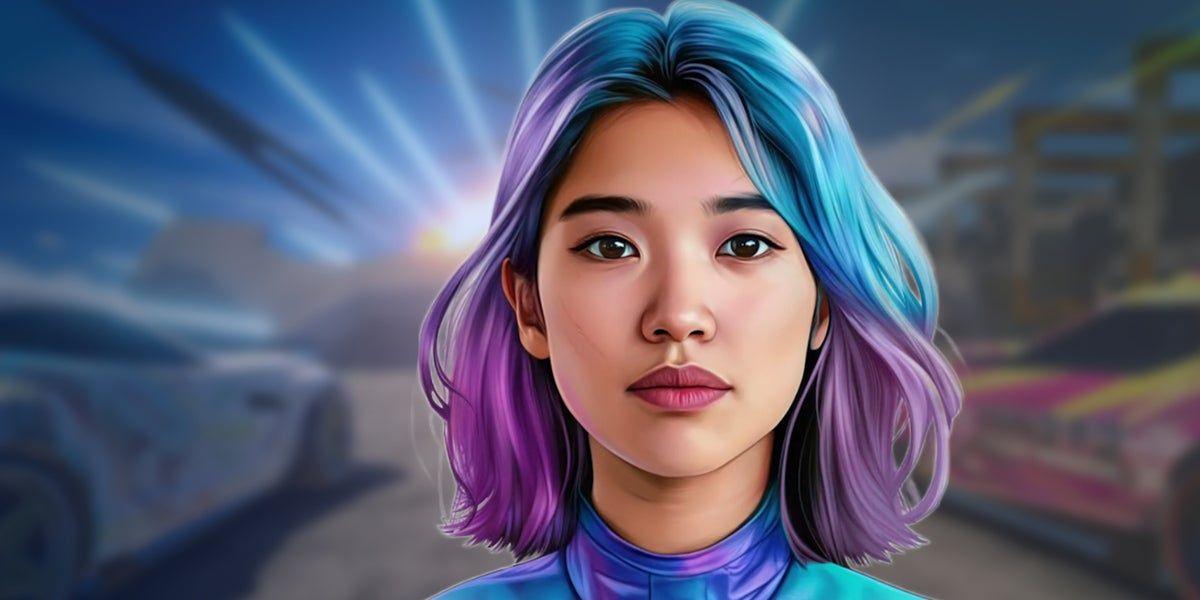
Source: Eurogamer
Project Kara involves remastering the mobile game Detonation Racing using AI tools at every step of the process. The team evaluated over 400 different generative AI tools, combining various capabilities to create a comprehensive development pipeline
2
.The Role of Human Input
James Roadley-Battin, lead artist on Project Kara, emphasized that no single AI tool was sufficient on its own. Instead, the team had to chain multiple tools together and rely on human expertise to guide the process
2
. This approach highlights the current limitations of AI in game development and the continued importance of human creativity and decision-making.Related Stories
Ethical Concerns and Industry Impact
The use of AI in game development raises several ethical concerns. These include:
- Environmental impact of power-hungry AI tools
- Potential job displacement in the creative industries
- Issues of art theft and copyright infringement
- Maintaining the quality and originality of game content
The SAG-AFTRA strike in the acting community has already highlighted some of these concerns, particularly regarding the use of AI in voice acting and performance capture
2
.The Future of AI in Game Development
As AI technology continues to advance, its role in game development is likely to grow. However, the industry is still grappling with how to integrate these tools ethically and effectively. The experiences of indie developers like Stamina Zero and the experiments conducted by companies like Keywords suggest that the relationship between AI and human creativity in game development will remain complex and contentious for the foreseeable future.
For now, it seems that the most successful approach involves using AI as a tool to enhance human creativity rather than replace it entirely. As the industry moves forward, establishing clear guidelines and transparency around AI use may be crucial in maintaining trust between developers and players.
References
Summarized by
Navi
[1]
Related Stories
Generative AI in Gaming: Developers and Industry Veterans Weigh In on Its Potential and Challenges
16 Oct 2024•Technology

Generative AI Usage in Steam Games Surges by 700% in 2025, Raising Concerns and Opportunities
17 Jul 2025•Technology
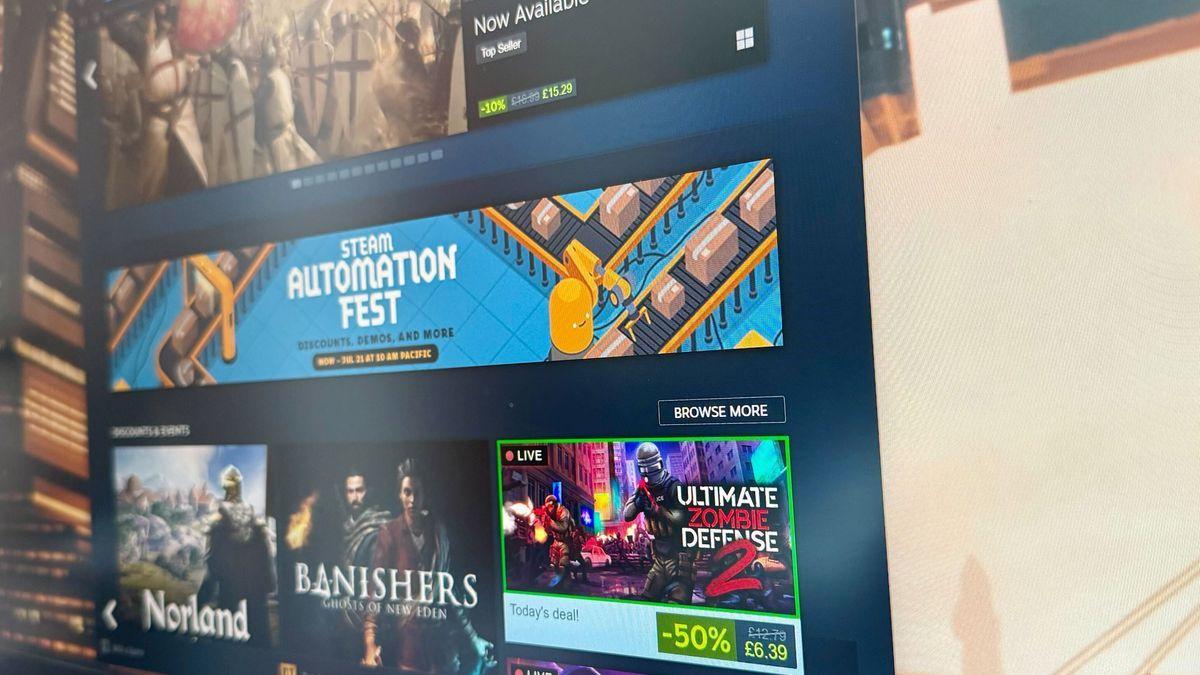
Gaming Industry Grapples with AI Revolution as Developers Fear Job Displacement
03 Nov 2025•Technology
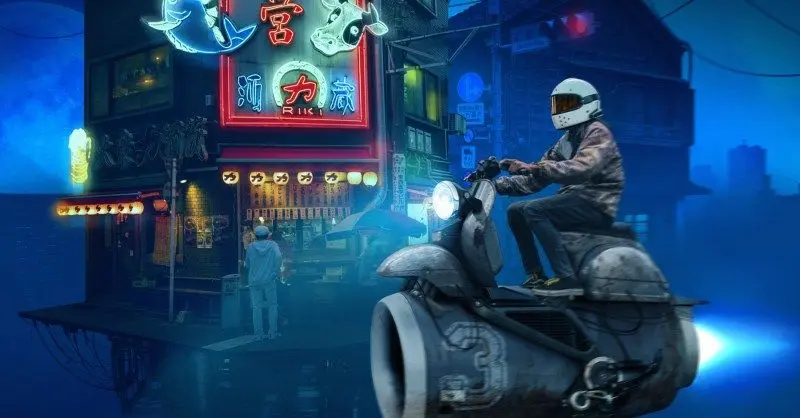
Recent Highlights
1
Google launches Gemini 3 Flash as default AI model, delivering speed with Pro-grade reasoning
Technology

2
OpenAI launches GPT Image 1.5 as AI image generator war with Google intensifies
Technology

3
OpenAI launches ChatGPT app store, opening doors for third-party developers to build AI-powered apps
Technology


